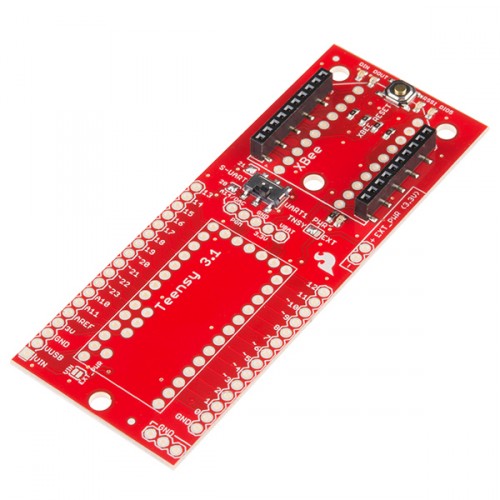

- #Arduino teensy driver how to#
- #Arduino teensy driver update#
- #Arduino teensy driver driver#
- #Arduino teensy driver full#
- #Arduino teensy driver download#
Once again you’re on your way to controlling an incredibly useful part with your Arduino. However if you’re planning on using the TLC5940 to the max – please review the notes provided by the library authors. If you are just using normal garden-variety LEDs or smaller servos, power won’t be a problem. However there is a maximum limit to the amount of power that can be dissipated before destroying the part. After some experimenting you may notice that the TLC5940 does get warm – and that’s ok. For example change SERVO_MIN_WIDTH from 200 to 203 and SERVO_MAX_WIDTH from 400 to 560.Īs mentioned earlier, the TLC5940 can handle a maximum of 120 mA per channel. You need to open the tlc_servos.h file located in the TLC5940 Arduino library folder and experiment with the values for SERVO_MIN_WIDTH and SERVO_MAX_WIDTH. If you servos are not rotating to the correct angle – for example you ask for 180 degrees and they only rotate to 90 or thereabouts, a little extra work is required. Tlc.init(0) // initialise TLC5940 and set all channels offĪnd the following video captures those four servos in action: The following is a quick example sketch that sets the brightness/PWM values of all the channels to different levels: #include "Tlc5940.h" You don’t need to call a TLC.update() after the clear function. If you want to turn off all channels at once, simply use: Tlc.clear()
#Arduino teensy driver update#
The second part is to use the following to update the TLC5940 with the required instructions from part one: Tlc.update()
#Arduino teensy driver full#
įirst – use one or more of the following functions to set up the required channels and respective brightness (PWM level): Tlc.set(channel, brightness) įor example, if you wanted to have the first three channels on at full brightness, use: Tlc.set(0, 4095) Each channel is numbered from 0 to 15, and each channel’s brightness can be adjusted between.

X is an optional parameter – if you want to set all the channels to a certain brightness as soon as the sketch starts, you can insert a value between for x in the Tlc.init() function. Now that the circuit works, how do we control the TLC5940? First, the mandatory functions – include the library at the start of the sketch with: #include "Tlc5940.h"Īnd then initialise the library by placing the following into void setup(): Tlc.init(x) You should be presented with output similar to what is shown in the following video: Once you have the circuit assembled – open up the Arduino IDE and upload the sketch BasicUse.pde which is in the example folder for the TLC5940 library. For example, if you have LEDs with a 20 mA forward current – the resistor calculation would be: Where R (in Ohms) is the resistor value and Imax (in Amps) is the maximum amount of current you want to flow through the LEDs. The required resistor value is calculated with the following formula: The purpose of the resistor is to control the amount of current that can flow through the LEDs.
#Arduino teensy driver driver#
Take note of the LED orientation – and remember the TLC5940 is a common-anode LED driver – so all the LED anodes are connected together and then to 5V:įor this particular circuit, you won’t need an external 5V power supply – however you may need one in the future.
#Arduino teensy driver how to#
If you’re not sure how to install a library, click here.
#Arduino teensy driver download#
Furthermore, please download and install the TLC5940 Arduino library by Alex Leone which can be found here. At this point, please download a copy of the TLC5940_data_sheet (.pdf) as you will refer to it through this process. It really is a convenient part, allowing you to adjust the brightness of sixteen individual LEDs via PWM (pulse-width modulation) – and you can also daisy-chain more than one TLC5940 to control even more.ĭuring this tutorial we’ll explain how to control one or more TLC5940 ICs with LEDs and also look at controlling servos. The TLC5940 is available in the DIP version above, and also surface-mount.

First up, here is a few examples of the TLC5940: Our reason for doing this is to demonstrate another, easier way of driving many LEDs – and also servos.

In this article we are going to examine the Texas Instruments TLC5940 16-channel LED driver IC.


 0 kommentar(er)
0 kommentar(er)
